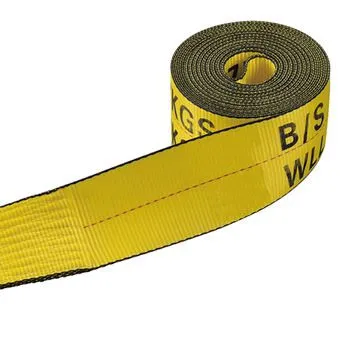- Afrikaans
- Albanian
- Amharic
- Arabic
- Armenian
- Azerbaijani
- Basque
- Belarusian
- Bengali
- Bosnian
- Bulgarian
- Catalan
- Cebuano
- Corsican
- Croatian
- Czech
- Danish
- Dutch
- English
- Esperanto
- Estonian
- French
- German
- Greek
- Hindi
- Indonesian
- irish
- Italian
- Japanese
- Korean
- Lao
- Malay
- Myanmar
- Norwegian
- Norwegian
- Polish
- Portuguese
- Romanian
- Russian
- Serbian
- Spanish
- Swedish
- Thai
- Turkish
- Ukrainian
- Uzbek
- Vietnamese
11月 . 27, 2024 21:56 Back to list
Exploring Alternatives to Fiber False Ceiling Materials for Modern Interiors
Understanding Fiber False Ceiling Materials Benefits, Applications, and Installation
In the realm of interior design and construction, false ceilings have gained immense popularity due to their aesthetic appeal and functional benefits. Among the various materials available for constructing false ceilings, fiber-based materials are increasingly preferred for their versatility, durability, and ease of maintenance. This article delves deep into fiber false ceiling materials, exploring their advantages, applications, and installation processes.
What are Fiber False Ceiling Materials?
Fiber false ceilings are constructed from various types of fibers, including mineral fibers, glass fibers, and synthetic fibers. These materials are engineered to create panels that can be molded into different designs, colors, and finishes. Fiber false ceilings are commonly used in commercial spaces, offices, hospitals, and residences, providing a seamless look while concealing structural elements like pipes, wiring, and HVAC systems.
Advantages of Fiber False Ceilings
1. Lightweight and Easy to Install One of the primary benefits of fiber false ceilings is their lightweight nature, making them easy to handle during installation. Compared to traditional ceiling materials like plaster, fiber panels reduce the load on the building structure, minimizing the risk of sagging over time.
2. Acoustic Properties Many fiber ceiling tiles are designed to provide sound absorption qualities. This is particularly beneficial in spaces requiring noise reduction, such as offices, auditoriums, and schools. The ability of fiber materials to absorb sound helps create a comfortable environment conducive to concentration and productivity.
3. Fire Resistance Safety is a paramount concern in any construction project. Fiber false ceilings often boast fire-resistant properties that comply with safety regulations, helping to prevent the spread of flames in case of a fire.
4. Moisture Resistance Certain fiber materials are engineered to resist moisture, making them ideal for humid settings like bathrooms and kitchens. This characteristic prevents issues such as mold growth, ensuring a healthier indoor environment.
5. Aesthetic Flexibility Fiber false ceilings are available in a plethora of designs, textures, and colors. This versatility allows architects and designers to experiment with various styles, contributing to the overall aesthetic appeal of a space.
Applications of Fiber False Ceilings
fiber false ceiling materials

Fiber false ceilings find applications across a wide spectrum of sectors. In commercial settings, they are commonly used in offices and retail spaces to create modern, sleek interiors. In healthcare facilities, fiber ceilings help reduce noise levels in waiting rooms and patient care areas. Educational institutions often utilize fiber ceilings for similar acoustic benefits in classrooms and auditoriums.
Residential applications include living rooms, dining areas, and home theaters, where the right ceiling can significantly enhance the ambiance. Additionally, fiber false ceilings can be utilized in places like restaurants and hotels to create inviting atmospheres while meeting aesthetic and functional demands.
Installation Process
Installing fiber false ceilings typically involves several steps
1. Planning and Measurement Accurate measurements of the space are essential to customize the panels efficiently. A detailed plan is created, taking into account the placement of lighting fixtures, air vents, and other elements.
2. Framework Installation A metal or wooden framework is installed on the existing ceiling to support the fiber panels. This framework is crucial, as it determines the level and stability of the false ceiling.
3. Panel Fixation The fiber panels are then cut to size and installed into the framework. This step may require adhesive, screws, or clips, depending on the specific product used.
4. Finishing Touches After all panels are installed, the final touches may include painting, adding decorative elements, or fitting light fixtures.
5. Final Inspection Once the installation is complete, a thorough inspection ensures that everything is secure and meets safety standards.
Conclusion
Fiber false ceiling materials are an outstanding choice for anyone looking to enhance the functionality and aesthetics of a space. Their lightweight, durable, and versatile nature makes them suitable for various applications, from commercial establishments to residential settings. As demand continues to grow, understanding the benefits and installation processes of fiber false ceilings will empower homeowners and builders alike to make informed decisions for their next construction or renovation project.
-
Transform Interiors with PVC Gypsum Ceiling: A Stylish, Durable, and Moisture-Resistant SolutionNewsMay.19,2025
-
The Smart Interior Upgrade: Discover the Durability and Versatility of Gypsum Ceiling Access Panel SolutionsNewsMay.19,2025
-
The Smart Choice for Interior Design: Discover the Value of PVC Gypsum Ceiling SolutionsNewsMay.19,2025
-
Mineral Fiber Ceiling Tiles: The Smart Blend of Performance and AestheticsNewsMay.19,2025
-
Mineral Fiber Ceiling Tiles: The Superior Choice Over Gypsum for Sound and Fire SafetyNewsMay.19,2025
-
Mineral Fiber Ceiling Tiles: Eco-Friendly Strength and Style for Every CeilingNewsMay.19,2025







